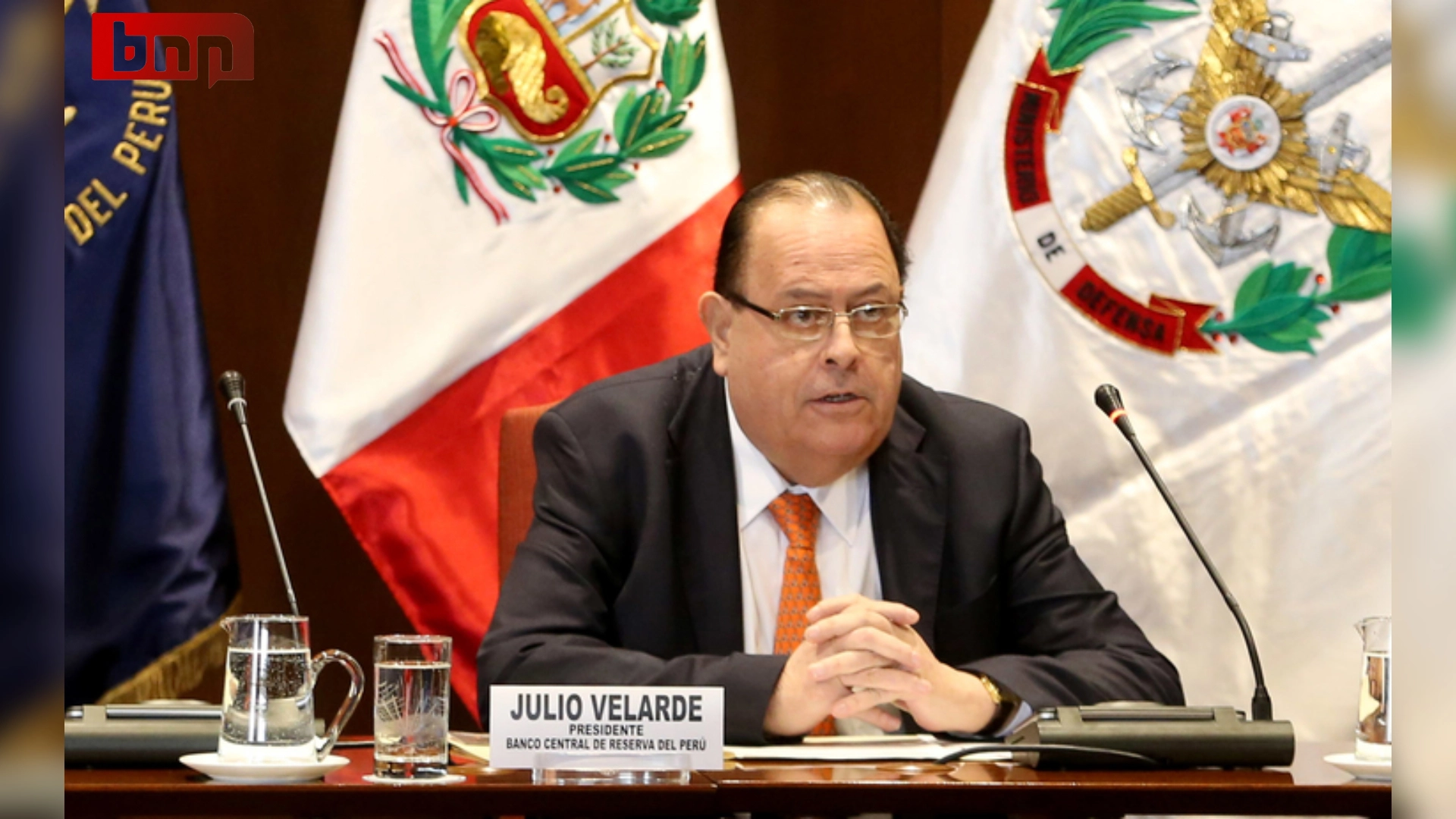The Central Reserve Bank of Peru (BCR) lowered most of its projections for the Peruvian economy for 2023 as the country continues to face a social and political crisis that affected its economy in January and a more complex global outlook.
The BCR now expects private investment to contract by 0.5% at the end of this year, 1.5 percentage points below the projections of the December 2022 Inflation Report (1%).
Meanwhile, the monetary entity expects the Peruvian economy to grow 2.6% this 2023, below the previous 2.9% projection.

“On the spending side, social conflicts negatively affected business and consumer confidence, which will imply lower growth in private spending in 2023 and a more gradual recovery by 2024″, the BCR specified in the presentation of the March inflation report.
Julio Velarde, president of the BCR, noted that lower growth for Peru is expected due to the impact of the social protests that took place with greater force in January, impacting the Peruvian economy in that period.
Velarde reiterated that the impact of the demonstrations in the first month of the year was 4% of GDP.
The contraction in private investment would be due to the sharp drop in Peruvian mining investment.
The BCR forecasts a 16.7% decline in mining industry investment this year, while non-mining investment would grow by only 1.5% (less than the 3.1% forecast in December.
“That gives a contraction of 0.5%,” Velarde said.
“There are no strong new mining investment projects (in Peru) in the short term,” Velarde highlighted during Friday’s presentation. In contrast, he said Chile has a vast portfolio of mining projects that leave Peru lagging in this area.
The BCR expects private consumption to grow 2.8%, 0.2 percentage points below last December’s projection, while the forecast for public consumption remains at 2%.
On the other hand, the public investment projection increased from 0% to 1%, given the excellent performance of these indicators during the first months of the year.
However, Velarde recalled that since this is a year of new local and regional authorities, no further growth is projected for this activity.
On the other hand, for the growth of the Peruvian economy in 2024, the BCR’s projection remains at 3%, while the expectation of private investment growth for next year was lowered from 2.5% to 1.8%.
IMPACT OF PROTESTS IN THE FIRST QUARTER
After the presentation of the inflation report, Velarde pointed out that the Central Bank expects the Peruvian economy to grow 0% in the first quarter of 2023 – the months of January, February, and March – due to the impact of the social protests and the heavy rains caused by cyclone Yaku.
January already saw a downward shock to the Peruvian economy due to social conflicts amid political unrest: Peru’s gross domestic product (GDP) fell by more than 1% in January, its first decline in 22 months, with the construction and mining sectors being the most affected.
For February this year, the BCR forecasts a 2% impact on economic growth.
“Without the protests, in a normal climate, we would have grown 2.4% (in February),” Velarde highlighted at the conference.
As a result of the social and political situation, the Peruvian economy would only grow between 0.4% to 0.5% in the second month of the year.
Meanwhile, Velarde anticipated that this March would negatively impact the economy mainly due to Cyclone Yaku and heavy rains in the northern and central regions of the country.
“We expect an impact of around 1%. On GDP,” he said.
“If one compares the damages now – due to Cyclone Yaku – with 2017, they are smaller in magnitude. We still don’t know what is going to happen.
The magnitude and the damages measured in millions of soles are completely different magnitudes,” emphasized the central bank president.
PERU’S INFLATION COULD RISE ABOVE 8% IN APRIL OR MAY
Despite the impact of the protests and the rains in the first months of 2023, the Central Reserve Bank maintains its expectation of reaching the inflation target range of between 1% and 3% at the end of this year.
The projection remains that Lima’s inflation will close in 2023 at 3%.
However, core inflation (excluding food and energy) would remain above the target range, with a projection of 3.2% at year-end.
“Core inflation would only return to the target range in the first quarter of 2024″, remarked Velade.
Velarde pointed out that the BCR projects inflation to drop from 8% to a lower level by April or May of this year.
With information from Bloomberg

